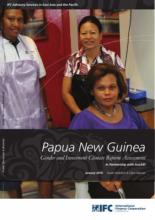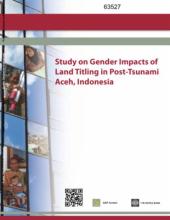Land Library Search
Through our robust search engine, you can search for any item of the over 73,000 highly curated resources in the Land Library.
If you would like to find an overview of what is possible, feel free to peruse the Search Guide.
/ library resources
Showing items 1 through 9 of 58.This paper investigates the impact of international migration on technical efficiency, resource allocation and income from agricultural production of family farming in Albania.
Livestock systems globally are changing rapidly in response to a variety of drivers. Human population growth, rapid urbanization, and growing incomes will lead to substantial increases in the demand for livestock products in the coming decades.
Cambodia emerged in the early 1990s from 30 years of conflict, the brutal Khmer Rouge era, and a decade of Vietnamese occupation, with one of the world’s lowest per-capita incomes, and with social indicators far behind those of neighboring Southeast Asian countries.
One of the most compelling reasons for pursuing low-carbon development is that the potential impacts of climate change are predicted to be severe, for both industrial and developing countries, and that reducing greenhouse gas emissions can reduce the risk of the most catastrophic impacts.
This report is one of six gender and investment climate reform assessments undertaken in six Pacific nations including Vanuatu. The report analyses gender-based investment climate barriers which constrain private sector development and identifies solutions to address them.
This report is one of six gender and investment climate reform assessments undertaken in six Pacific nations including Papua New Guinea. The report analyses gender-based investment climate barriers which constrain private sector development and identifies solutions to address them.
Urbanization and climate change will define much of the 21st century. Urbanization leads to improvement in standards of living, and through the increased density and service delivery efficiency of cities, higher growth can be achieved with lower greenhouse gas emissions.
The tsunami that originated from the Indian Ocean in 2004 wreaked massive destruction, killing more than 130,000 people and displacing half a million individuals in Aceh, Indonesia. More than 800 kilometers of coastline was affected, and close to 53,795 land parcels were destroyed.
This paper identifies key challenges and solutions for carrying out project-level economic analysis of adaptation to climate change, both stand-alone and integrated into broader development projects.









